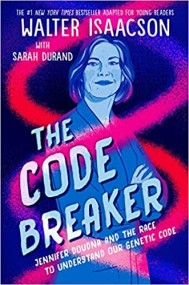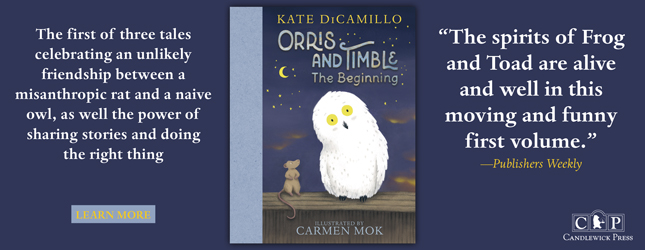
About This Book:
Walter Isaacson’s #1 New York Times bestselling history of our third scientific revolution: CRISPR, gene editing, and the quest to understand the code of life itself, is now adapted for young readers!
When Jennifer Doudna was a sixth grader in Hilo, Hawaii, she came home from school one afternoon and found a book on her bed. It was The Double Helix, James Watson’s account of how he and Francis Crick had discovered the structure of DNA, the spiral-staircase molecule that carries the genetic instruction code for all forms of life.
This book guided Jennifer Doudna to focus her studies not on DNA, but on what seemed to take a backseat in biochemistry: figuring out the structure of RNA, a closely related molecule that enables the genetic instructions coded in DNA to express themselves. Doudna became an expert in determining the shapes and structures of these RNA molecules—an expertise that led her to develop a revolutionary new technique that could edit human genes.
Today gene-editing technologies such as CRISPR are already being used to eliminate simple genetic defects that cause disorders such as Tay-Sachs and sickle cell anemia. For now, however, Jennifer and her team are being deployed against our most immediate threat—the coronavirus—and you have just been given a front row seat to that war.
*Review Contributed by Karen Yingling, Staff Reviewer*
History in the Making
Along the way, there were personal and professional challenges, and Isaacson has tirelessly interviewed and researched these occurences for the book. We see personal items like Doudna’s marriage, which lead to her and her husband leaving the East Coast so they could work at universities closer to each other; historical information about science in the 1990s through to the present day; and lots of details about how CRISPR works and how it ws used in experiments to help people. Some of these, like the attempts to cure Victoria Gray’s sickle cell disease, worked well, although not all trials were successful for all conditions.
Doudna worked with a wide range of scientists, and also investigated different avenues she might pursue, like scientific companies. We get to read about companies like Genetech, and their contributions to the field. Eventually, she worked with Emmanuelle Charpentier, with whom she won the Nobel Prize in 2020. The final chapter of the book discovers the impact that CRISPR technology had on the process of dealing with COVD-19 and the work on vaccinations for this disease.
There are a number of biographies about groundbreaking women in science, but most are written years after the scientist’s floruit. It’s fascinating to see a biography covering the seminal work of a scientist when we don’t know what the ultimate trajectory of her work will be!
While this is a lot of information for the casual middle school reader, and might be a better purchase for high school libraries or schools with strong STEM programs, it’s a great choice for readers who enjoyed Acevedo’s Path to the Stars: My Journey from Girl Scout to Rocket Scientist, Moss’s The Woman Who Split the Atom: The Life of Lise Meitner, Dreilinger’s The Secret History of Home Economics: How Trailblazing Women Harnessed the Power of Home and Changed the Way We Live or Silvey’s Unforgotten: The Wild Life of Dian Fossey and Her Relentless Quest to Save the Mountain Gorillas.



































